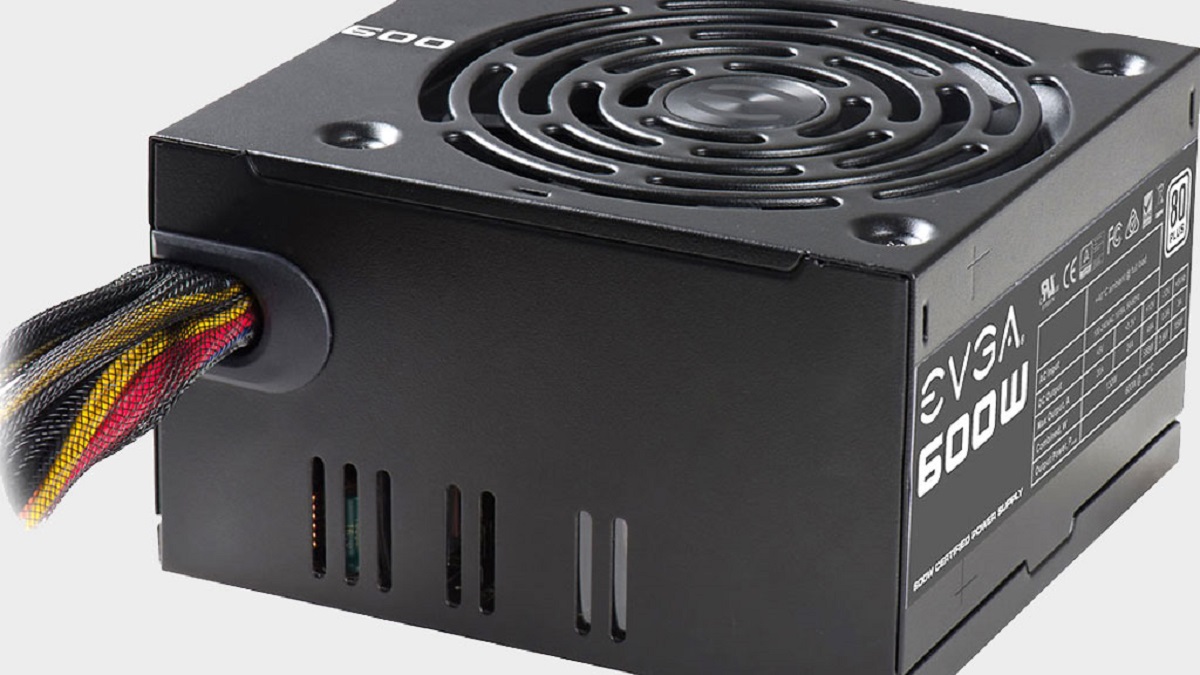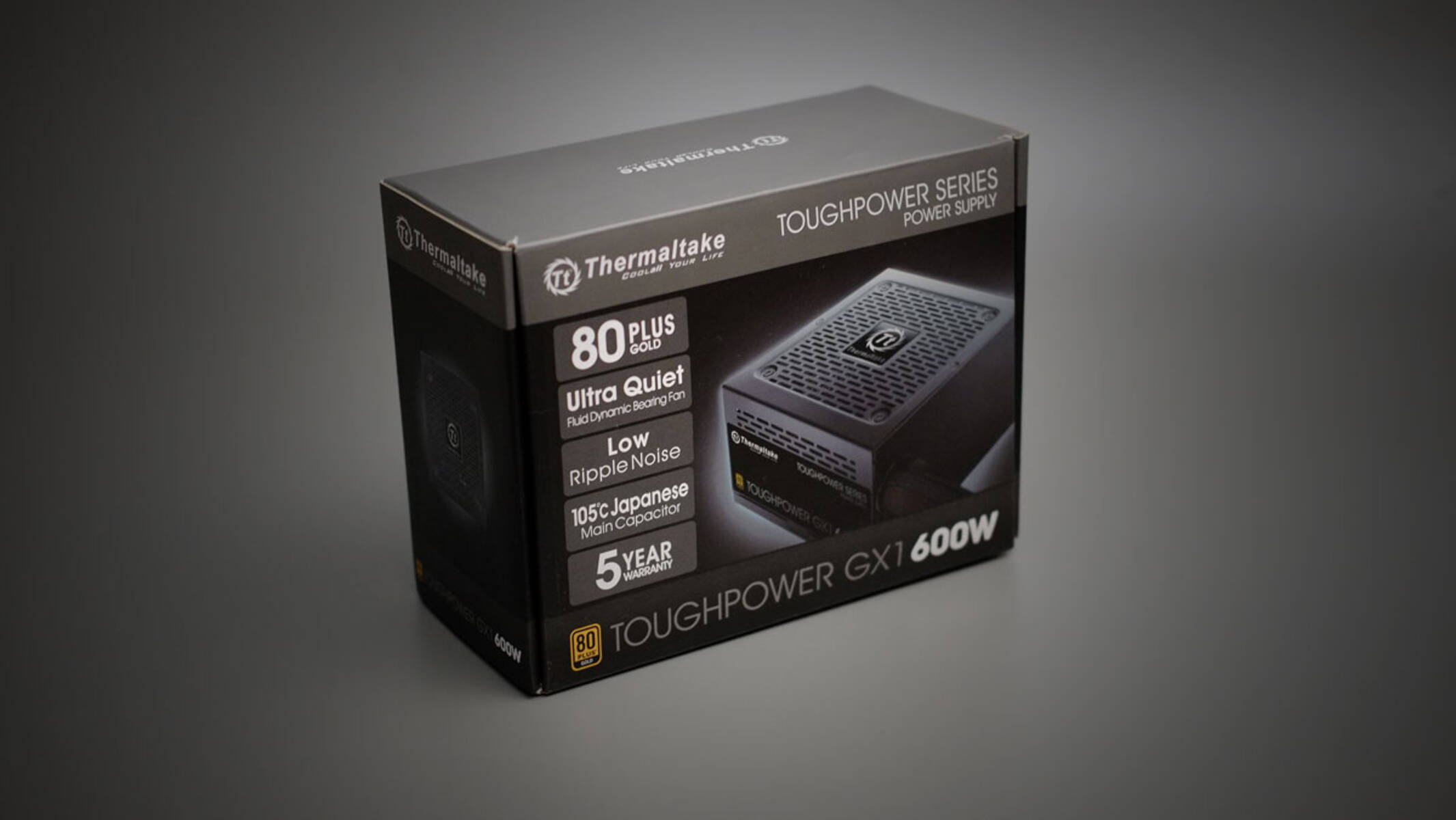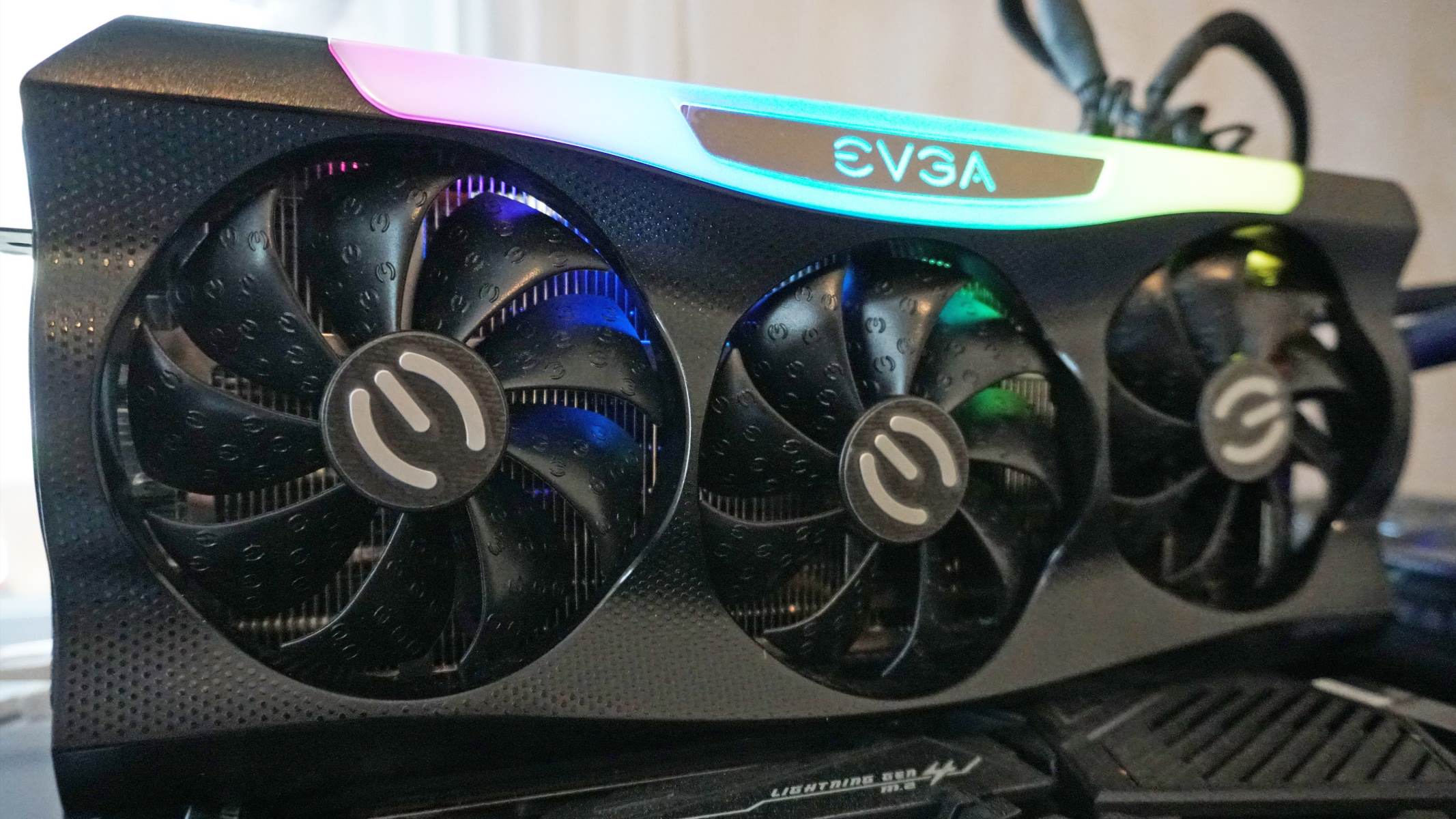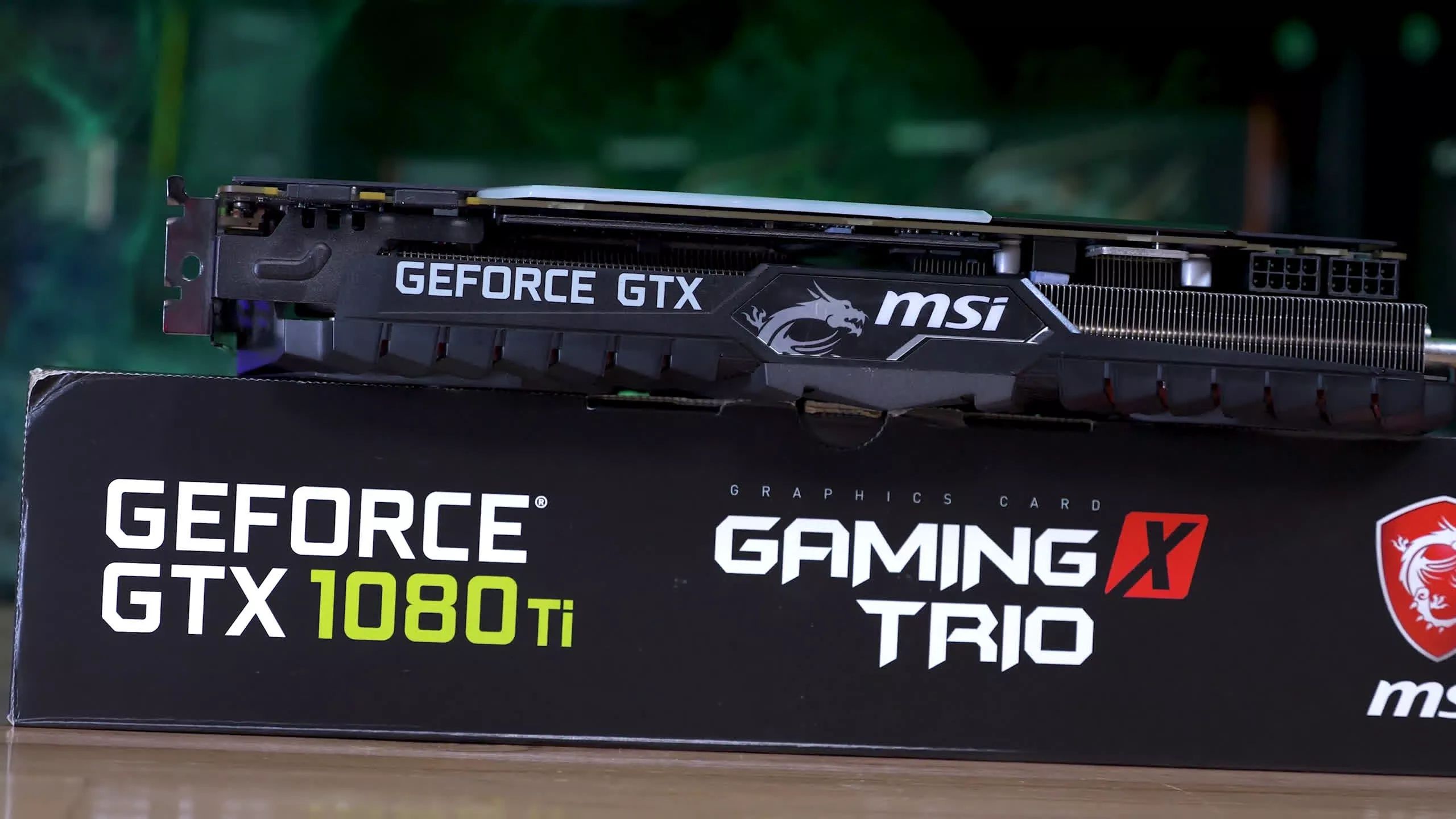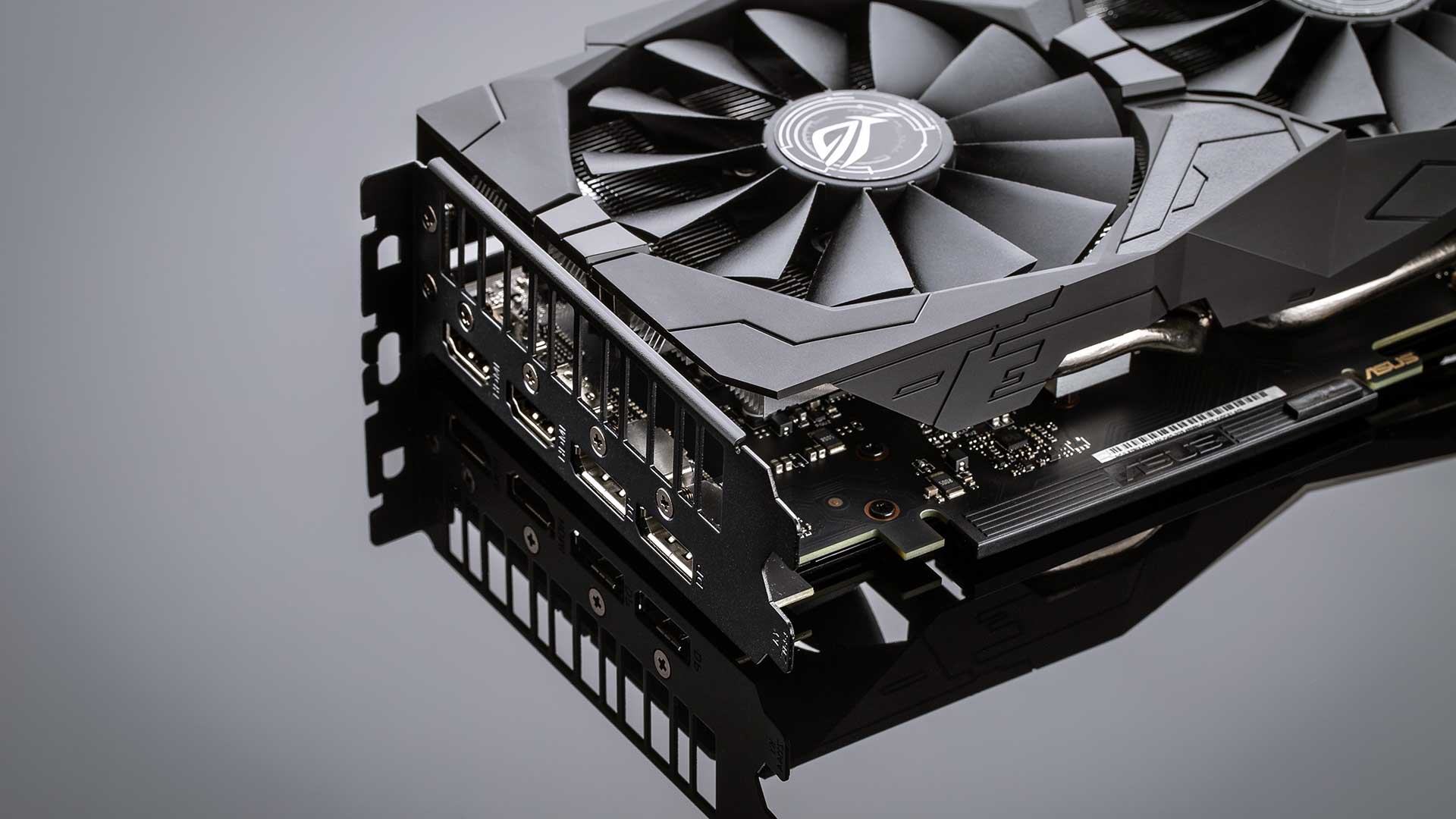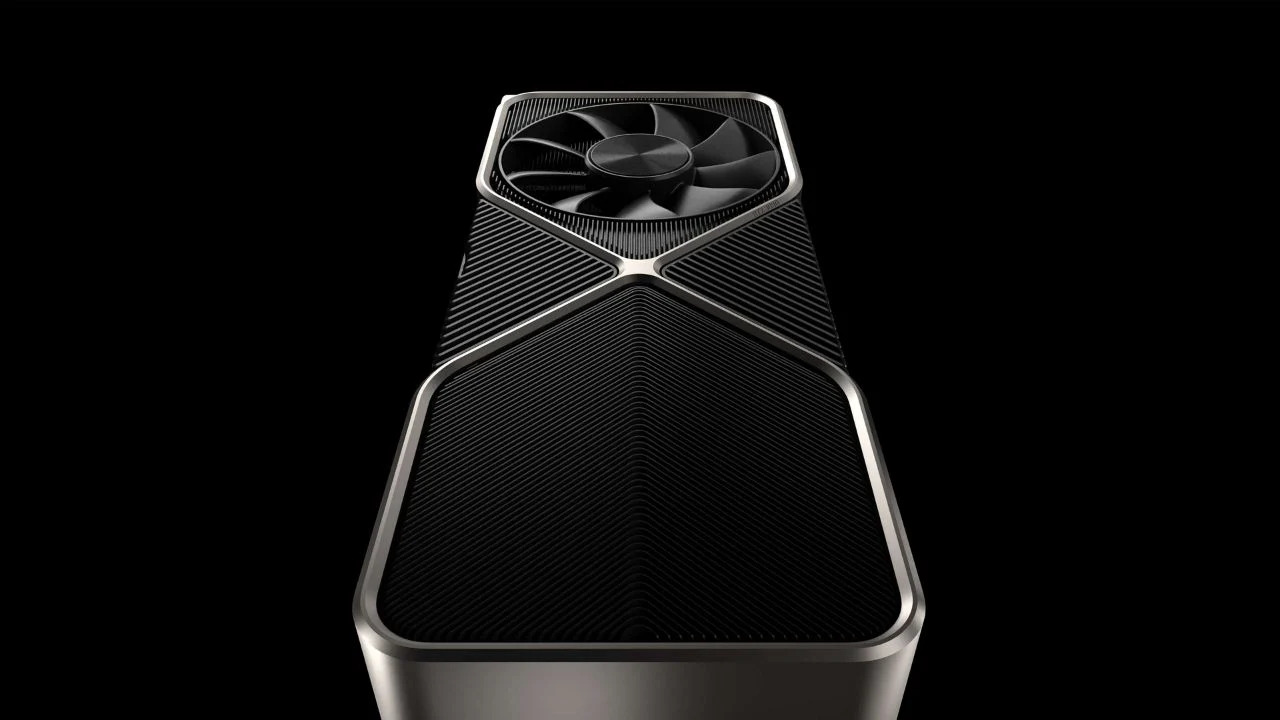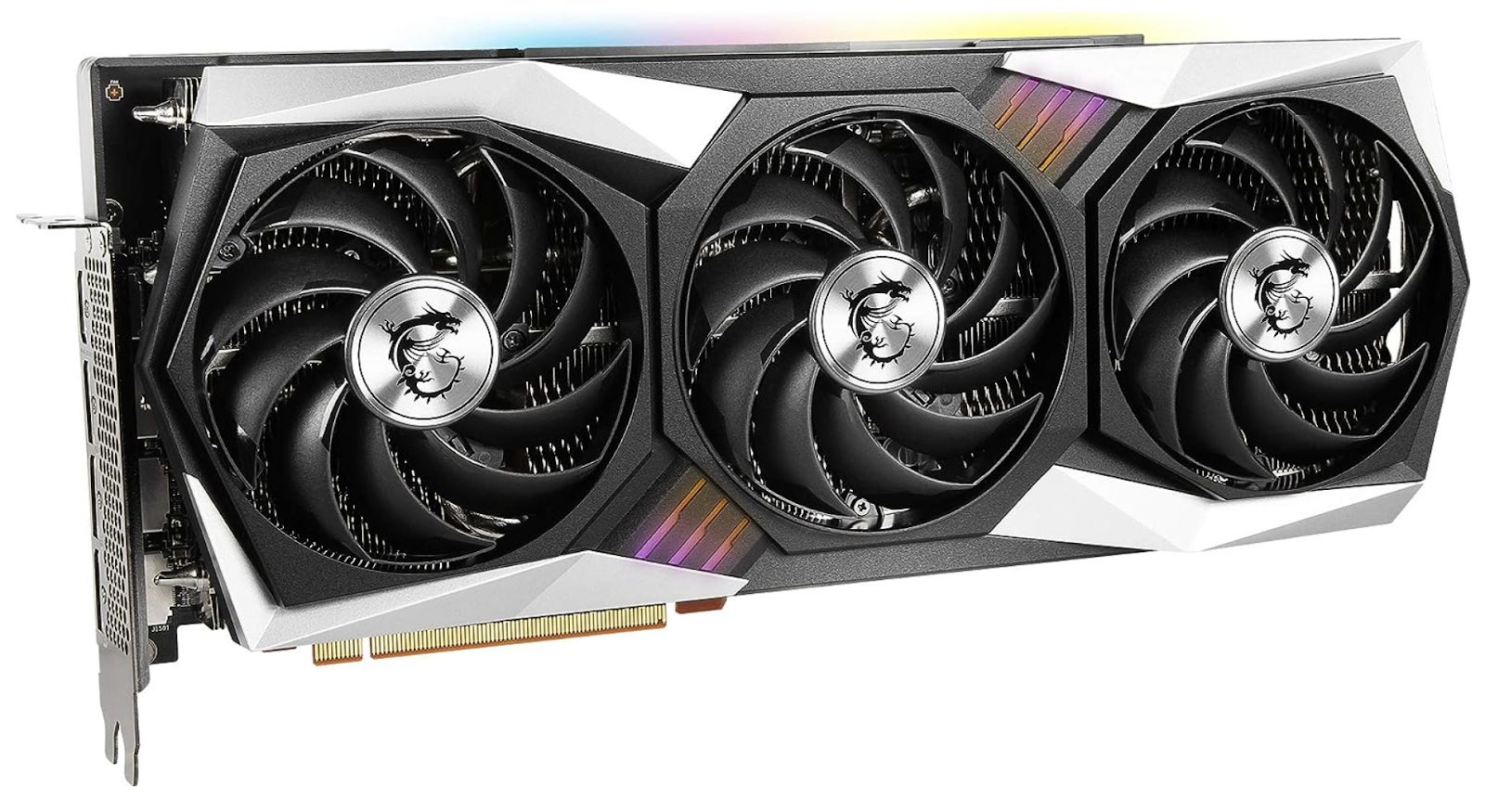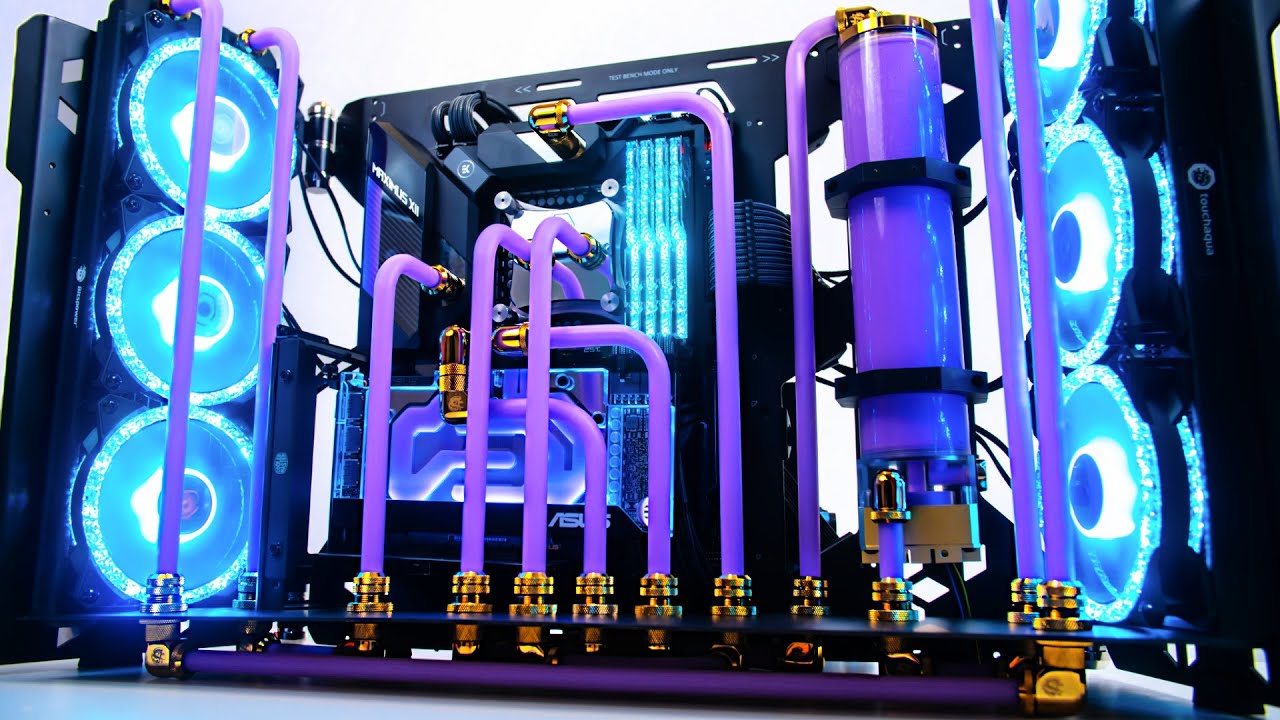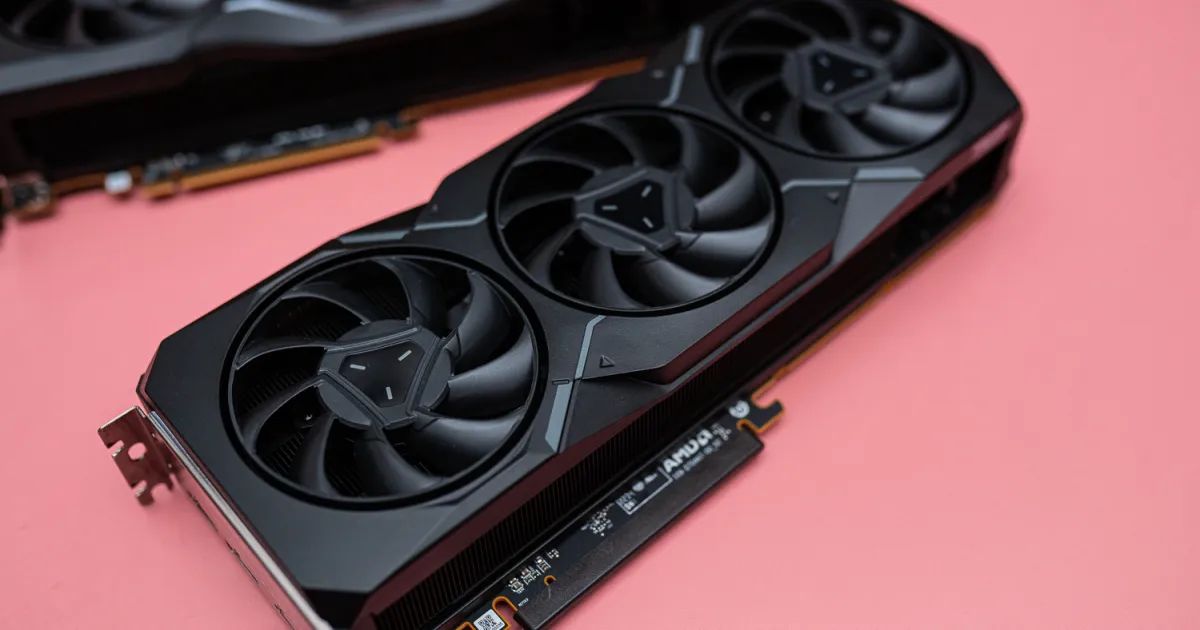Introduction
Welcome to our guide on choosing the right power supply unit (PSU) for the NVIDIA GeForce RTX 3060 Ti graphics card. As one of the most powerful mid-range GPUs on the market, the 3060 Ti requires a reliable and properly sized PSU to ensure optimal performance and stability.
With its advanced architecture, ray-tracing capabilities, and high-performance output, the 3060 Ti demands a PSU that can deliver sufficient power while maintaining efficiency. In this guide, we will explore the key factors to consider when selecting a PSU for your 3060 Ti, including wattage requirements, efficiency ratings, form factors, modular vs. non-modular designs, and compatible cables and connectors.
By understanding the unique power demands of the 3060 Ti and evaluating your specific needs, you can ensure that your GPU is powered safely and efficiently, allowing you to unleash its full potential in demanding gaming and productivity tasks.
Let’s dive into the world of PSUs and discover the essential considerations necessary for pairing your 3060 Ti with the ideal power supply unit.
Power Supply Requirements for the 3060 Ti
When selecting a power supply for the NVIDIA GeForce RTX 3060 Ti, it’s crucial to meet its specific power requirements to ensure stable and efficient operation. The power supply directly impacts the GPU’s performance, so choosing a suitable one is essential.
The 3060 Ti has a recommended power limit of 200 watts, but it’s important to consider additional power requirements for the rest of your system. It’s recommended to have a power supply with a wattage higher than the GPU’s power limit to provide ample power for other components such as the CPU, motherboard, and storage devices.
While the 3060 Ti can technically function with an 8-pin power connector, it’s highly recommended to choose a power supply with both an 8-pin and 6-pin connector. The additional power connectors provide the necessary stability and headroom for the GPU to operate optimally, especially during demanding tasks such as gaming or rendering.
Furthermore, considering the future upgrade potential of your system is important. If you plan to add more powerful components in the future or overclock your GPU, it’s wise to opt for a higher wattage power supply to accommodate these potential power demands.
Steer clear of cheap, generic power supplies as they may not meet the necessary power requirements and could compromise the stability and performance of your 3060 Ti and the rest of your system.
Now that we understand the power supply requirements for the 3060 Ti, let’s explore the key factors to consider when choosing a PSU in the next section.
Factors to Consider when choosing a PSU
Choosing the right power supply unit (PSU) for your NVIDIA GeForce RTX 3060 Ti involves considering several key factors. Let’s delve into these factors, helping you make an informed decision.
Wattage: The wattage of your PSU is crucial. It should exceed the power requirements of your GPU while allowing headroom for other system components. For a 3060 Ti, a PSU with a minimum wattage of 600 watts is recommended.
Efficiency: PSU efficiency refers to how effectively it converts AC power from your wall outlet to the DC power your components need. Look for PSUs with high efficiency ratings, such as 80 Plus Bronze, Silver, Gold, or even Platinum, as they minimize wasted energy and reduce heat output.
Modularity: PSUs come in two types: modular and non-modular. A modular PSU allows you to detach unnecessary cables, improving cable management and airflow within your system. It’s recommended to choose a modular PSU for better organization and cleaner aesthetics.
Certifications: PSU certification denotes that it meets specific industry standards for safety and performance. Look for certifications like 80 Plus and safety certifications like UL (Underwriters Laboratories) or TUV (Technischer Überwachungsverein) to ensure the PSU adheres to stringent quality standards.
Connectors: Ensure that the PSU has the necessary connectors to power all your components. For the 3060 Ti, you’ll need at least one 8-pin and one 6-pin PCIe power connector. Additionally, check for sufficient SATA power connectors for storage devices and peripheral connectors for fans and RGB lighting.
Cooling and Noise: Consider the cooling system of the PSU. PSUs with larger fans and efficient cooling mechanisms help maintain optimal temperatures, prolonging the lifespan of the unit. Additionally, pay attention to noise levels, as quieter PSUs contribute to a more comfortable and enjoyable computing experience.
Brand Reputation: Stick to reputable PSU brands known for their reliability and quality, such as Corsair, EVGA, Seasonic, and be quiet!. These brands often offer extended warranty periods, ensuring peace of mind with your purchase.
With these factors in mind, you can confidently choose a PSU that meets the specific requirements of your RTX 3060 Ti while providing stable and efficient power to your entire system.
Recommended PSU Wattage for the 3060 Ti
Choosing the right power supply unit (PSU) wattage is crucial for the reliable and efficient operation of your NVIDIA GeForce RTX 3060 Ti graphics card. While the 3060 Ti itself has a recommended power limit of 200 watts, it’s important to consider the power requirements of other components in your system.
Typically, a PSU with a wattage higher than the GPU’s power limit is recommended. This ensures that there is sufficient power not only for the 3060 Ti but also for other power-hungry components like the CPU, motherboard, storage devices, and peripherals.
For a system with a single 3060 Ti and a mid-range CPU, a PSU with a minimum wattage of 600 watts is suitable. This provides enough headroom for system efficiency, ensures stable power delivery even under heavy load, and allows for potential future upgrades.
However, if you plan to add more powerful components to your system, such as multiple GPUs or a high-performance CPU, it’s advisable to opt for a higher wattage PSU. A PSU in the range of 750-850 watts will cater to these power requirements and provide room for overclocking and future expansions.
It’s important to note that wattage estimates are not set in stone, and actual power consumption can vary depending on various factors like system configuration, overclocking, and workload intensity. Therefore, it’s always better to have some headroom in terms of wattage to ensure stability and avoid pushing the PSU to its maximum capacity.
Additionally, choosing a PSU with a higher wattage rating results in the PSU running at a lower load capacity, which tends to be more efficient and quieter compared to operating near or at maximum capacity. This can contribute to better overall system performance and longevity.
By selecting a PSU with the recommended wattage for your system, you can ensure reliable power delivery to your RTX 3060 Ti and other components, allowing them to operate optimally and without any power-related issues.
PSU Efficiency and Certification
When choosing a power supply unit (PSU) for your NVIDIA GeForce RTX 3060 Ti, considering its efficiency and certification is essential. PSU efficiency refers to how effectively it converts AC power from your wall outlet to the DC power required by your components, minimizing waste and reducing energy costs.
The efficiency of a PSU is indicated by various certification levels, the most common being the 80 Plus certification. The 80 Plus program tests the PSU’s efficiency at different load levels, including 80 Plus Bronze, Silver, Gold, Platinum, and Titanium. These certifications signify the PSU’s efficiency rating, with Titanium being the highest and Bronze being the lowest among the 80 Plus certifications.
The higher the efficiency rating, the less energy is wasted as heat, making a more efficient PSU not only environmentally friendly but also cost-effective in the long run. An efficient PSU will generate less heat, ensuring cooler operating temperatures and reducing strain on system cooling, resulting in improved overall system stability and longevity.
In addition to the 80 Plus certifications, other certifications like PFC (Power Factor Correction) and safety certifications like UL (Underwriters Laboratories) or TUV (Technischer Überwachungsverein) also validate the quality and safety standards of a PSU. These certifications ensure that the PSU complies with international standards and adheres to strict regulations for electrical safety and performance.
Choosing a PSU with higher efficiency and appropriate certifications not only benefits the environment and saves on electricity bills but also guarantees a more stable and reliable power supply to your RTX 3060 Ti. However, it’s important to note that higher efficiency levels often come with a higher price tag. Consider your budget and power requirements when weighing the cost-effectiveness of a higher-rated PSU.
Ultimately, investing in an efficient and certified PSU will provide peace of mind, knowing that your 3060 Ti and other components are receiving clean and stable power, resulting in optimal performance and longevity for your gaming or professional computing tasks.
PSU Form Factor
When selecting a power supply unit (PSU) for your NVIDIA GeForce RTX 3060 Ti, it’s crucial to consider the form factor that is compatible with your computer case. The form factor determines the physical dimensions and mounting options of the PSU, ensuring proper fitment within your system.
ATX (Advanced Technology eXtended) is the most common form factor for desktop PSUs. Most standard-sized computer cases support ATX PSUs. These PSUs typically measure around 150mm in width, 86mm in height, and varying depths, ranging from 140mm to more than 180mm. ATX PSUs are available in non-modular, semi-modular, and fully modular designs.
If you have a smaller form factor case, such as a mini-ITX or micro-ATX case, you may need to consider SFX (Small Form Factor eXtended) or TFX (Thin Form eXtended) PSUs. SFX PSUs have a smaller footprint, approximately 100mm in width and 125mm in depth, making them suitable for compact cases. TFX PSUs are even smaller, with dimensions around 85mm in height, 65mm in width, and 175mm in depth. These form factors provide flexibility for building in space-constrained cases.
It’s important to carefully measure the available space in your case and verify the form factor compatibility before purchasing a PSU. Keep in mind any specific clearance restrictions or mounting requirements within your case that could affect the PSU’s fitment.
Additionally, pay attention to the PSU’s fan orientation and the ventilation system in your case. Most PSUs have a fan that draws air from inside the case and exhausts it out the back. However, some cases may require PSUs with a fan on the bottom, drawing in cool air from outside the case. Ensuring proper airflow can help maintain optimal operating temperatures for both the GPU and PSU.
Lastly, if aesthetics are important to you, consider the design and color scheme of the PSU. Many PSUs nowadays come with stylish designs, sleeved cables, and customizable RGB lighting options to match your overall system theme.
By selecting a PSU with the appropriate form factor for your case, taking into account clearance restrictions, proper airflow, and your aesthetic preferences, you can ensure a seamless integration of your RTX 3060 Ti and PSU, enhancing both functionality and visual appeal.
Modular vs Non-Modular PSUs for the 3060 Ti
When choosing a power supply unit (PSU) for your NVIDIA GeForce RTX 3060 Ti, you’ll come across two main options: modular and non-modular PSUs. Each type has its own advantages and considerations, so let’s explore the differences between the two.
Non-Modular PSUs: Non-modular PSUs come with a fixed set of cables attached to the unit. These cables include those necessary to power your motherboard, GPU, storage devices, and other components. The advantage of non-modular PSUs is their affordability, making them a popular choice for budget-conscious builders. However, they can lead to cable clutter within your system, potentially hindering airflow and making cable management more challenging.
Modular PSUs: Modular PSUs allow you to detach and connect only the cables you need for your specific system configuration. This customization brings several benefits. Firstly, it simplifies cable management, allowing you to neatly route and organize the necessary cables while leaving out the unused ones. This enhances airflow within your system and makes it easier to maintain a clean and tidy build. Secondly, modular PSUs facilitate future upgrades or component changes since you can easily replace or add cables as needed. However, modular PSUs are typically more expensive compared to their non-modular counterparts.
For the RTX 3060 Ti, a modular PSU is highly recommended due to its potential power requirements and the need for efficient cable management. With its additional power connectors, such as an 8-pin and 6-pin PCIe connectors, and potential expansion in the future, having a modular PSU ensures you can connect the necessary cables without cluttering your system unnecessarily.
That said, if you have a tight budget or prioritize simplicity over aesthetics and cable management, a non-modular PSU can still provide reliable power to your 3060 Ti. However, it’s crucial to plan and consider your cable management strategy in advance to ensure the airflow and cooling capabilities of your system are not compromised.
Ultimately, the choice between a modular or non-modular PSU for your 3060 Ti depends on your budget, desire for cable organization, and system upgrade potential. Whichever option you choose, ensure it meets the power and connector requirements of your GPU while providing stable and efficient power delivery.
PSU Cables and Connectors for the 3060 Ti
Choosing the right power supply unit (PSU) cables and connectors is crucial for properly powering your NVIDIA GeForce RTX 3060 Ti graphics card and ensuring its optimal performance. Let’s explore the essential cables and connectors you need to consider.
1. PCIe Connectors: The 3060 Ti requires both an 8-pin and a 6-pin PCIe power connector for proper power delivery. These connectors directly connect to the GPU, providing the necessary power for its operation. Ensure that your PSU has these specific connectors available to power your 3060 Ti effectively.
2. SATA Power Connectors: SATA power connectors are essential for powering storage devices such as SSDs and HDDs. These connectors supply the necessary power to ensure smooth operation of your storage drives. Make sure your PSU has sufficient SATA power connectors to accommodate all your storage devices.
3. Peripheral Connectors: Peripheral connectors, such as Molex or Berg connectors, are used to power various peripherals, including case fans, RGB lighting, and other accessories. Depending on your system requirements, ensure that your PSU has enough peripheral connectors to power all the necessary components.
4. CPU Power Connector: While the PSU cables that power your CPU are typically included with the motherboard, it’s important to ensure that your PSU has the correct CPU power connector compatibility. Most modern motherboards require an 8-pin or 4+4-pin EPS connector to provide sufficient power to the CPU.
When selecting a PSU, it’s important to consider the number and length of cables provided. Longer cables allow for more flexibility in cable management, especially in larger cases, while shorter cables can help reduce cable clutter in smaller cases. Additionally, some PSUs offer sleeved cables or cable combs for improved aesthetics and cable organization.
Before purchasing a PSU, carefully review the specifications and ensure that it provides the necessary cables and connectors to power your RTX 3060 Ti and other components. Check the manufacturer’s website or documentation to confirm the PSU’s cable compatibility, or consult with a trusted retailer or industry professional for further assistance if needed.
By choosing a PSU with the appropriate cables and connectors for your 3060 Ti, you can ensure efficient and reliable power delivery to your GPU, resulting in enhanced performance and a smoother computing experience.
Top PSU Brands for the 3060 Ti
When choosing a power supply unit (PSU) for your NVIDIA GeForce RTX 3060 Ti, it’s essential to select a reputable and reliable brand known for producing high-quality PSUs. Let’s explore some of the top PSU brands that are well-regarded in the industry.
1. Corsair: Corsair is a renowned brand in the PC gaming community, offering a wide range of PSUs known for their reliability, efficiency, and performance. Their PSU lineup includes options for various budgets and power requirements.
2. EVGA: EVGA is another highly respected brand, especially among PC enthusiasts and gamers. They offer a diverse selection of PSUs that deliver stable power delivery, high efficiency, and excellent build quality.
3. Seasonic: Seasonic is known for producing some of the most efficient and reliable PSUs in the market. Their PSUs are often lauded for their silent operation, high-quality components, and excellent power regulation.
4. be quiet!: As the name suggests, be quiet! specializes in producing PSUs with low noise levels and exceptional cooling performance. Their PSUs are known for their robust build quality and excellent overall reliability.
5. Thermaltake: Thermaltake is a well-established brand offering a wide range of PSUs suitable for various system configurations. Their PSUs are known for their efficiency, stable power delivery, and competitive pricing.
6. Cooler Master: Cooler Master is a popular choice for PC builders, offering reliable PSUs with good build quality and value for money. They provide a range of options catering to different power requirements and budgets.
7. NZXT: NZXT is known for its stylish and aesthetically pleasing PSUs that blend well with modern PC builds. Their PSUs offer solid performance, reliability, and efficient power delivery.
8. XFX: XFX specializes in producing PSUs targeted at gamers and enthusiasts. Their PSUs are well-regarded for their robust construction, efficient power delivery, and competitive pricing.
These brands have established themselves in the market by consistently delivering high-quality power supplies that meet the demanding needs of modern gaming systems. However, it’s always recommended to research specific models within each brand and read reviews from reputable sources to ensure compatibility and suitability for your specific requirements.
By opting for a PSU from one of these reputable brands, you can have confidence in the reliability and performance of your power supply, providing a stable and efficient power source for your RTX 3060 Ti and the rest of your system.
Conclusion
Choosing the right power supply unit (PSU) for your NVIDIA GeForce RTX 3060 Ti is essential to ensure a stable and efficient power delivery system for your GPU and overall system. Throughout this guide, we have explored various factors to consider when selecting a PSU for your 3060 Ti, including power requirements, efficiency ratings, form factors, modular vs. non-modular designs, compatible cables and connectors, and top PSU brands.
By carefully considering the wattage requirements of your 3060 Ti and other components, you can ensure that your PSU is capable of delivering sufficient power for optimal performance. Additionally, selecting a PSU with a high efficiency rating and appropriate certifications guarantees efficient power conversion and adherence to safety standards.
The form factor of the PSU plays a crucial role in ensuring compatibility with your computer case, allowing for proper fitment and airflow. Modular PSUs offer the flexibility of customizable cable management, while non-modular PSUs provide cost-effective options for those on a tight budget.
Considering the necessary cables and connectors, such as PCIe connectors, SATA power connectors, and peripheral connectors, will ensure that all your components receive the power they need to operate efficiently and reliably.
Finally, opting for a PSU from a reputable brand, such as Corsair, EVGA, Seasonic, or be quiet!, ensures that you are investing in a high-quality power supply that meets your requirements and provides long-term reliability and stability.
Remember, investing in the right PSU for your 3060 Ti is crucial for the overall performance, stability, and longevity of your gaming or professional computing system. Carefully evaluate your power requirements, consider the factors discussed in this guide, and choose a PSU that meets your needs to maximize the potential of your 3060 Ti and enjoy smooth and uninterrupted gaming experiences or productive workloads.







